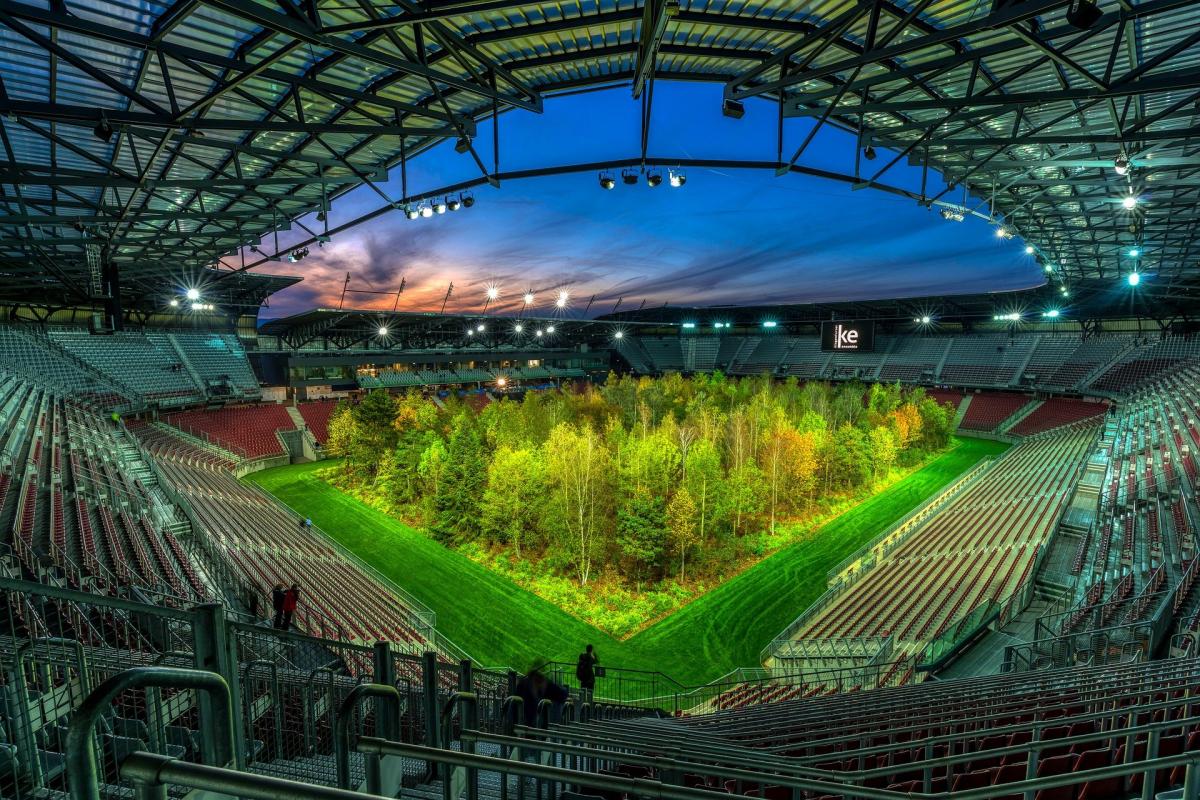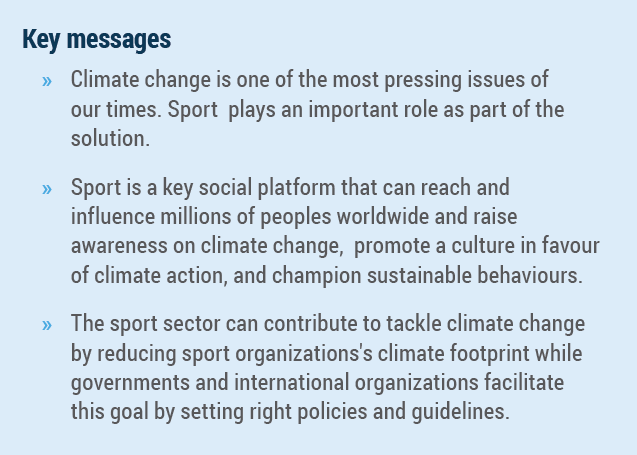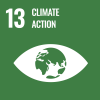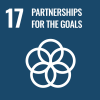
Download the PDF
 INTRODUCTION
INTRODUCTION
Climate change is one of the most pressing issues of our times. According to the World Bank Group, even if countries fulfill current emission-reduction pledges, our planet's mean temperature could rise from 0.8°C above pre-industrial levels to as high as 4°C by 2100. The heavy toll of global warming on populations across the globe from rising seas, floods and droughts to fires, heatwaves, and devastating storms, compels governments, civil society, and other stakeholders to come together and confront this reality head on. On 24 September, the Security Council discussed the climate crisis. In November 2021, the United Nations Climate Change Conference, COP26, gathered world leaders in an attempt to propel climate action beyond the historic commitments and timetables of the Paris Accord of 2015. With little time left to prevent or limit catastrophic climate change, there is an urgent need to move from words to actions and ultimately, results. Sport can play a key role in this process raising awareness, influencing behaviors, and shrinking its carbon footprint. With its broad reach spanning diverse human interests, social backgrounds and geographical contexts, sport can contribute to creative, low-cost, high-impact solutions. Its potential as a paradigm of sustainable development has been recognized by both the 2030 Agenda for Sustainable Development and in UN General Assembly resolution A/RES/73/24. Given the dire situation engulfing our planet, the time to act is now.
CHALLENGES: HOW SPORT AFFECTS AND, IS AFFECTED BY, CLIMATE CHANGE
There is an increasing acknowledgement of the connection between sport and climate change as sport both affects and is affected by this crisis. Although the influence of sporting organizations on climate is complex and hard to measure, it is broadly recognized that unsustainable practices in sport have further contributed to climate change. According to the Rapid Transition Alliance’s report, the global sport sector contributes the same level of emissions as a medium-sized country. The carbon footprint from transportation to/from events, the construction and use of various sporting venues, and the supply chains for sport-related equipment all play an important role in affecting the world’s climate. For example, it has been estimated that the 2016 Rio Olympics released 3.6 million tons of carbon dioxide, while the 2018 Russia World Cup released 2.16 million tons. These kinds of assessments are even more concerning as they often underestimate the real impact of sport’s carbon footprint, for instance not including the impact of the construction of new stadiums, the water and energy consumed to support events and the food, plastic and other waste produced during events. In a cyclical manner, the sport sector is impacted by the consequences of rising temperatures. Heavier precipitations, higher sea levels, and the increase in the number of extreme weather events are having disruptive consequences on sport. According to a recent study, approximately half of the former winter Olympic host cities will likely not be able to sponsor winter games by 2050 due to a lack of snow and ice in a warming world. In 2018, the high temperatures forced the US Open tennis tournament organizers to offer a “heat-break” to athletes. During the 2020 Australian Open, poor air quality caused by wildfires forced some tennis players to withdraw from the tournament. By 2050, almost one fourth of England football league team’s stadiums (23 out of 92) are projected to be partially or totally flooded every year. It must be noted that these are only examples of high-profile sporting events. The impact on smaller, more local events is potentially far greater. From youth leagues to collegiate teams, millions of athletes have already confronted some climate disruptions, and these will only magnify with time. These might appear minor problems that pale against a backdrop of food, energy, and water insecurity, compelling many people to migrate as climate impacts accelerate over the next few decades. But the magnitude of the crisis dictates that solutions must come from every sector, every nation, every voice with an idea. And it turns out, athletes are rising to the challenge and their contributions can make a difference.
OPPORTUNITIES: THE ROLE OF SPORT IN COMBATTING CLIMATE CHANGE
Sport is both one of the contributors and casualties of global warming. However, it is in a unique position to be part of the solution for several reasons. First, its broad social platform makes it a strategic tool in influencing people’s attitudes; its reach extends to almost all geographical areas and social backgrounds. Billions of individuals are involved in sport either as spectators, practitioners, or facilitators. Second, sport can play an important role in educating and raising awareness towards global warming and more broadly environmental issues, including promoting a healthy, sustainable lifestyle. A study found that fans are receptive to environmental initiatives, partaking in the efforts to reduce environmental footprints not only when attending sport events, but also in their everyday behaviors and as advocates within their local communities. Targeted environmental sustainability campaigns therefore can be key in this process. In this, athletes and teams can serve as role models to their supporters. They can use their elevated social status to educate individuals and communities on climate change, motivating them to change their lifestyles for the betterment of the planet. Given their vast following, they can act as role models, setting examples, raising awareness and modeling behaviors, particularly among young people. Athletes have also been increasingly active in lobbying for climate action: in 2014, in the aftermath of Sochi’s melting, 105 Winter Olympians signed a petition urging world leaders to address global warming; on the occasion of the COP26 climate change summit, over 50 global Olympians and Paralympians from Tokyo 2020 came together to advocate for ambitious actions from World Leaders during the summit. Third, sport is increasingly recognized as a low-cost, high-impact tool to reach sustainable development, including addressing global warming. Finally, the incorporation of sustainability standards in the sport industry can have a ripple effect, contributing to sustainable production and consumption standards in other industries.
Initiatives at the international level For these reasons, in recent years, an increasing number of public and private initiatives have been emerging at both the international and national levels. At the international level, the International Olympic Committee (IOC) has developed a Sustainability Strategy which includes climate action among its focal areas. IOC aims, by 2030, to move beyond carbon neutrality and make the games carbon negative. With this goal, it has set a “Strategic intents for 2030” plan which entails a reduction of both direct and indirect greenhouse gas emissions for operations and events associated with the Olympic Movement’s activities, and an adaptation to the consequences of climate change in the planning of sport facilities and events. Commitment to climate action is now also one of the requirements for candidate cities to host the Olympic Games. This has contributed to the recent Tokyo 2020 summer Olympics strategy for climate action, which entailed, for instance, the use of pre-existing buildings (60 percent of all facilities were from pre-existing buildings), the use of renewable energy for games and operations, and the enaction of a carbon offset program. The first World Indigenous Games, a multisport event involving indigenous athletes from all across the world, hosted roundtables on Sustainability and Climate Change. The World Bank Group’s Connect4Climate, a global partnership program dedicated to climate change communication (initiated together with the Italian Ministry of Environment, the German Federal Ministry for Economic Cooperation and Development, in collaboration with about 500 knowledge partners) launched in 2014 the Sport4Climate initiative. The programme, started in collaboration with the Forum Das Americas, is a global communication campaign that showcases how sport is tackling global warming. Its initiatives include the “1.5C: the record we must not break” campaign, inaugurated in 2016, aiming at raising awareness in the wider audience around the 1.5°C goal set in the Paris Agreement. The UN’s Sport for Climate Action Framework, launched in 2016 by the United Nations Framework Convention on Climate Change (UNFCCC) and some of the leading sport entities, has the aim of providing a systematic framework to the multiple, fragmented initiatives already in existence. The UNFCCC encourages sport organizations to help reach the Paris Agreement’s goals, compelling the signatories to take systematic measures to reduce their carbon emissions and reach climate neutrality by 2050. The recently held United Nations Climate Change Conference, COP26, included numerous sport and climate change focused events, including a panel exploring sport’s role in climate action gathering high-level speakers and signatories of the UNFCCC Sports for Climate Action Framework; a panel discussing actions to make sport more sustainable; a panel on the role of sport broadcasting in helping addressing climate change; and a day of youth-focused panels on sport and climate action.
Public initiatives at the national level At the national level, several countries have started engaging with sport as a tool to address climate change. In 2016 the United States government undertook two federal initiatives on the issue: first, it convened a workshop followed by a report on sustainable sport buildings. The workshop gathered sport industry stakeholders in order to define a roadmap for the design, construction and operation of energy efficient sport facilities. The resulting report identified existing resources, best practices and case studies for more sustainable sporting venues and stadiums. Second, in 2017 and 2018, the US State Department’s Sports Diplomacy Division in collaboration with US embassies and consulates worldwide, sent sports envoys—American professional athletes and coaches—abroad to engage with youth and participate in community outreach activities on issues including the environment. Cape Verde’s State Secretariat for Youth and Sport has included environmental sustainability in its efforts towards infrastructure development completing all infrastructure developments with minimum environmental impact. Palau’s Environmental Policy Protection Board’s Coastal Unit involves high-profile athletes in raising awareness on environmental issues to preserve coastal regions and mangrove areas. Zambia has encouraged sport organizations in their efforts towards environmental sustainability. These initiatives include the planting of trees at the Olympic Africa Center during a visit by the International Olympic Committee President and the Minister of Sport, Youth and Child Development.
Non-governmental and private initiatives at the national level Beyond these public policies, climate challenges are being articulated and solutions are being implemented also by non-governmental and private actors. In Germany, the Bayer Leverkusen football club uses only clean energy, well water for irrigation, and has drastically reduced the use of single-use plastics. England’s Forest Green Rovers football club is the world’s first UN-certified carbon-free team; it boasts 100 percent renewable energy and rainwater recycling, and is building a new carbon-free, wooden stadium. Universities as well are becoming venues for training and debate on the role of sport for climate change. The Pac-12 Conference, for instance, is the first academic sport conference focused entirely on integrating sustainability, including the issue of climate change, into college athletics and across university campuses. Stanford University offers a course on “Sustainability in Athletics” and has a “Students Athletes for Sustainability” organization aimed at educating student-athletes and athletic staff on environmental sustainability and sponsoring many sustainability themed events such as electronic recycling drives at the football stadium, spreading their message beyond the athletes themselves.
BARRIERS TO CHANGE
Despite the emerging recognition and increasing number of initiatives on the issue, gaps and barriers to change still persist. First and foremost, is the willingness and commitment of governments and other stakeholders to address climate change through sport. In some instances, declared commitments are perceived as being limited to marketing strategies and amounting to greenwashing. Secondly, when commitments are in place, policies and initiatives sometimes lack hard targets, mechanisms for control, a sense of urgency and/or a coherent and comprehensive strategy. Additionally, commitments to reduce greenhouse emissions while simultaneously receiving fossil fuel consuming-related sponsorship (such as by petrochemical companies and airlines) represents a contentious and potentially counter-productive situation that needs to be addressed. Thirdly, the lack of comprehensive data on carbon emissions makes the planning and implementation of effective policies difficult. According to the Rapid Transition Report, sport organizations often have narrow views in assessing their environmental impacts, focusing on facilities and events, while overlooking related external factors such as transportation of teams and fans, or interlinked industries with a sizable carbon-production, such as broadcasting and sportswear industries. Some efforts towards more comprehensive assessments have been taken by the IOC, UEFA, and FIFA in relation to the Olympics, the European Football Championships and the World Cup. Additionally, sport practitioners, according to a study by Texas A&M University, can feel constrained from engaging in environmental initiatives due to lack of support from their organization’s upper management and ownership, or uncertainty about fans’ responses.
CONCLUSIONS AND RECOMMENDATIONS
The urgency to address climate change is growing every day. Sport can be part of the solution. As we build back better and stronger from the social, political, and economic consequences of the coronavirus disease (COVID-19) pandemic, there is an opportunity to rethink the relationship between sport and climate change, and support and expand the efforts already underway. While sport diplomacy is already exemplifying the positive impact that the pursuit of sport can have, it is time to expand on that mission, to build upon the foundation already laid and tackle climate change through sport.
With this aim, several actions can be taken:
- The sport community should commit to reduce its direct and indirect greenhouse gas emissions, and take concrete actions (such as using solely renewable energy, building carbon-free sport venues);
- Governments should set policy frameworks and incentives for sport to become sustainable, and to promote sport as a tool to raise awareness about climate change;
- National governments, in collaboration with international organizations and other national actors, should undertake capacity building efforts targeted at different actors involved in the sporting sector on how to address and mitigate climate change;
- National governments, in collaboration with international organizations, should collect robust data as measuring and reporting greenhouse gas emissions are important steps towards the implementation of the Paris Agreement. Estimates need to move beyond the current narrowly focused assessments and include the broader spectrum of carbon emissions related to sporting events;
- National governments and international organizations should create collaborations and partnerships across different stakeholders – including national and local governments, the private sector, academia, science, technology and innovation experts, and civil society organizations – to promote sport as a tool for climate action.
 Welcome to the United Nations
Welcome to the United Nations


